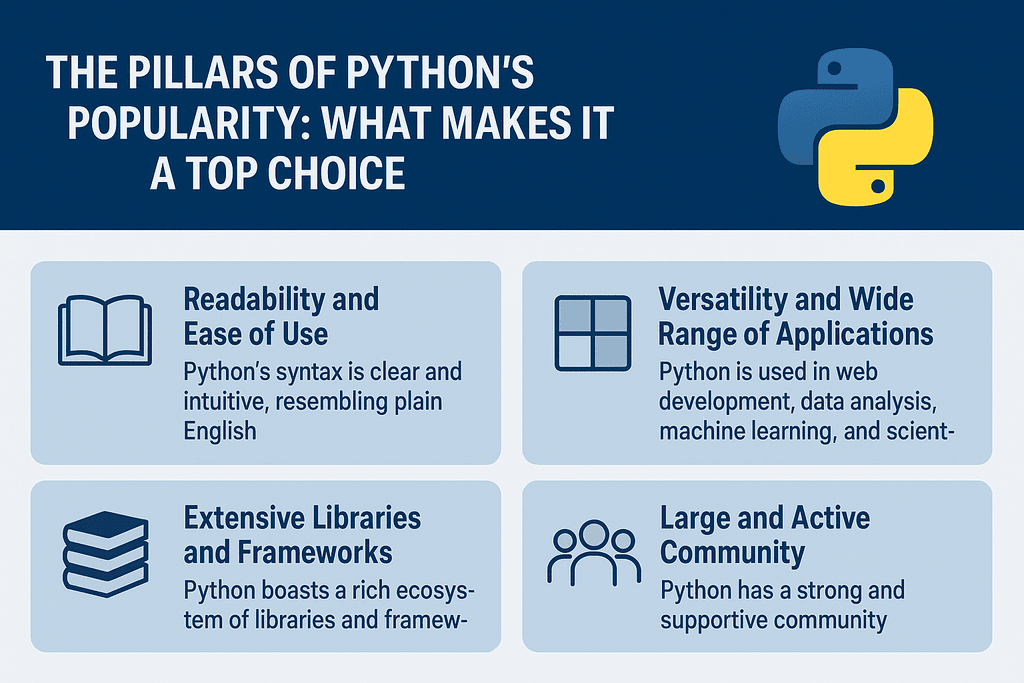
Python's popularity stems from its readability, versatility, and large community support, making it a top choice for beginners and experienced developers alike. Its simple syntax and extensive libraries facilitate rapid development across various domains, including web development, data science, and machine learning.
Here's a more detailed look at why Python is so popular:
Readability and Ease of Use:
Python's syntax is designed to be clear and intuitive, resembling plain English rather than complex code. This makes it easier to learn and understand, especially for beginners, and allows for faster development cycles.
Versatility and Wide Range of Applications:
Python is used in a vast array of fields, including web development (using frameworks like Django and Flask), data analysis (with libraries like Pandas and NumPy), machine learning (with TensorFlow and PyTorch), and scientific computing.
Extensive Libraries and Frameworks:
Python boasts a rich ecosystem of libraries and frameworks that provide pre-built functionalities for various tasks, saving developers time and effort.
Large and Active Community:
Python has a strong and supportive community that provides ample resources, documentation, and assistance to developers.
Cross-Platform Compatibility:
Python code can run on different operating systems (Windows, macOS, Linux) without requiring significant modifications, enhancing its portability.
Open-Source and Free:
Python is an open-source language, meaning it's freely available and can be used and modified without licensing restrictions.
Suitable for Beginners:
Its gentle learning curve and readily available resources make Python an excellent language for those new to programming.
In essence, Python's popularity is a result of its user-friendly nature, its broad applicability, and the strong support of its community, making it a compelling choice for a wide range of development tasks.
